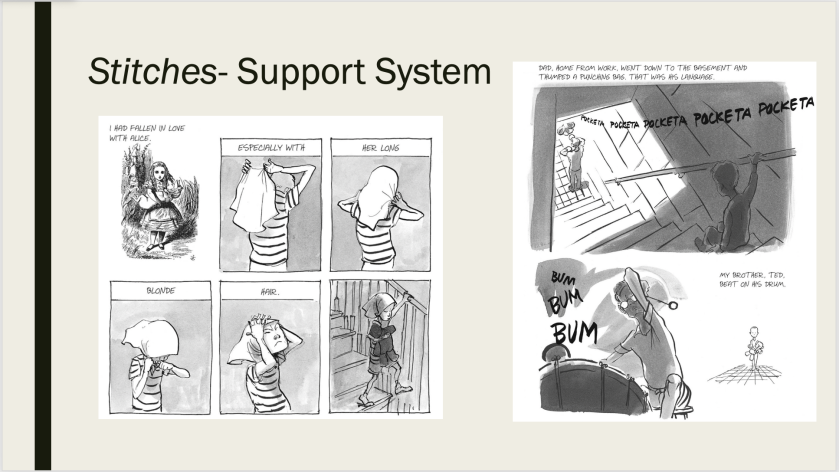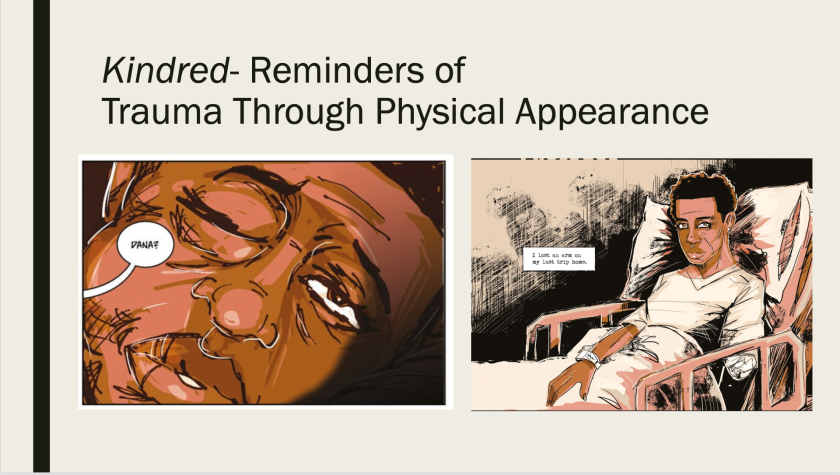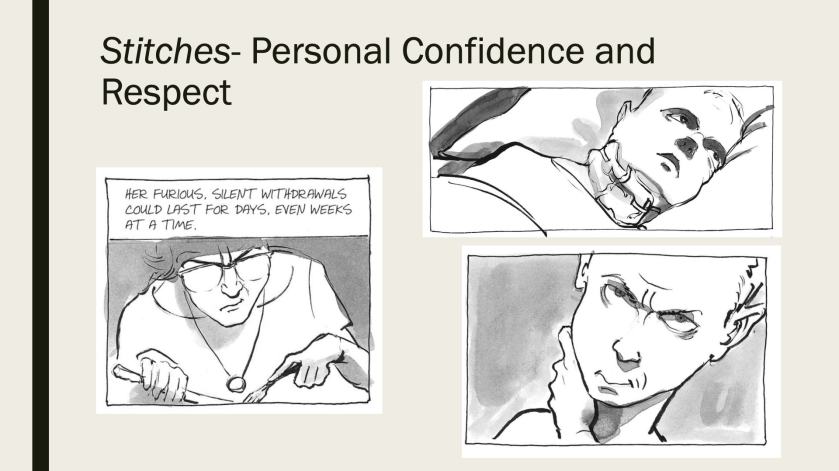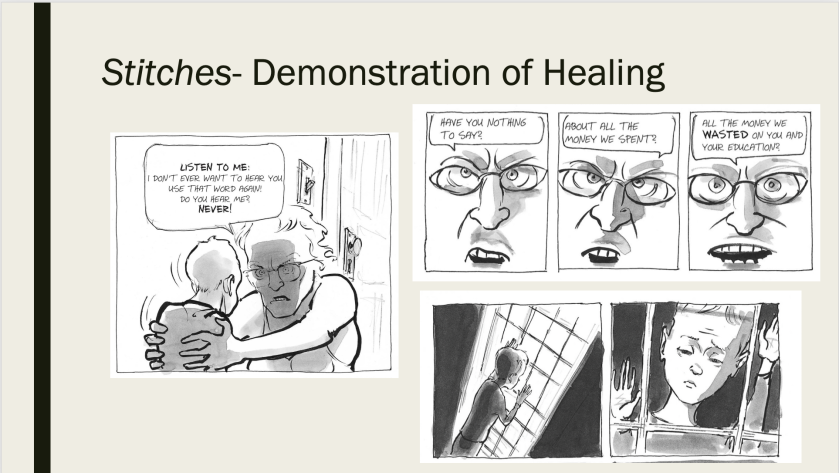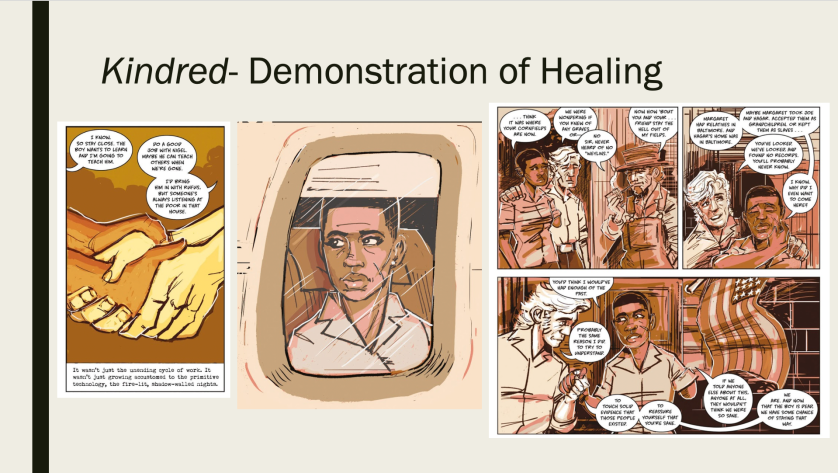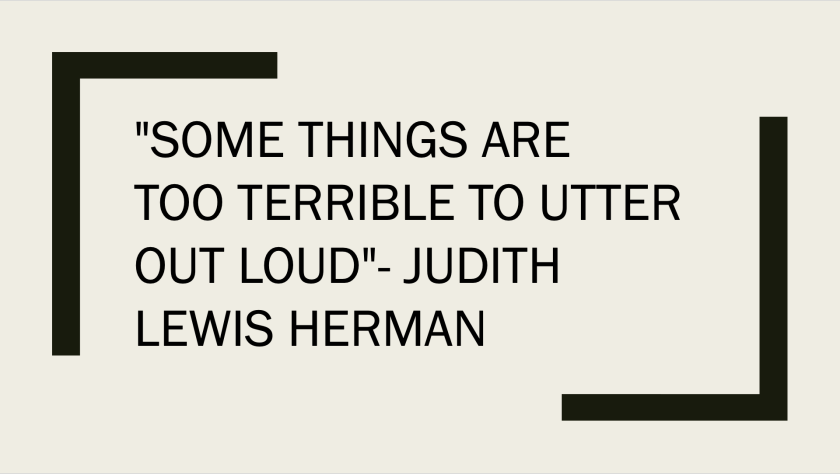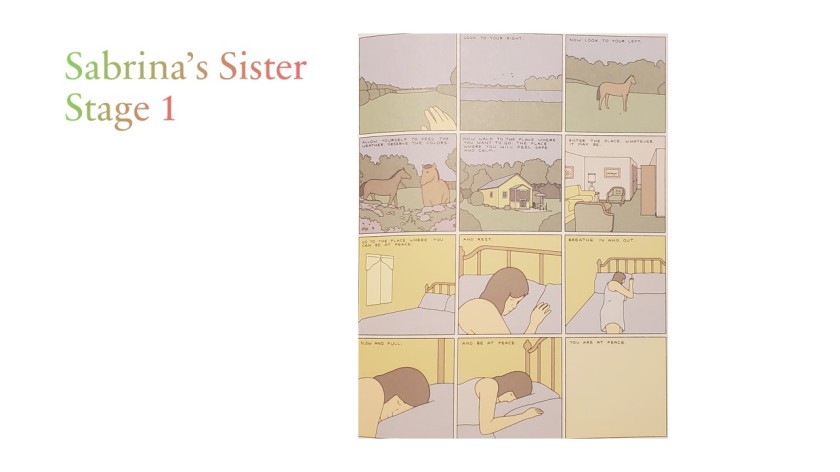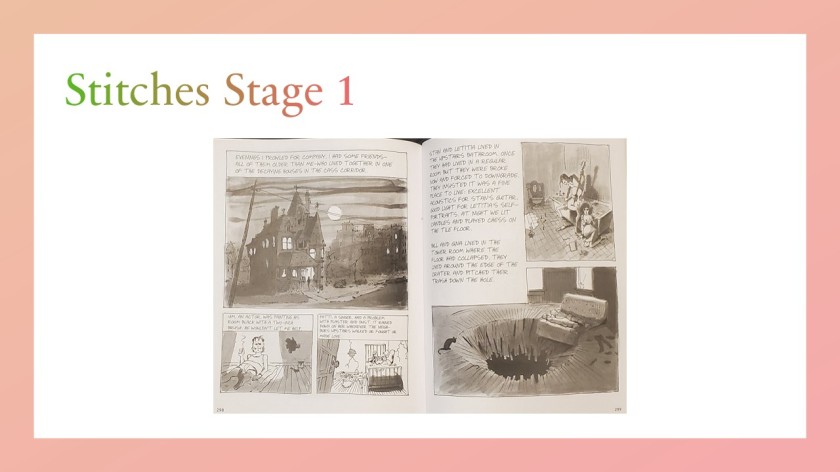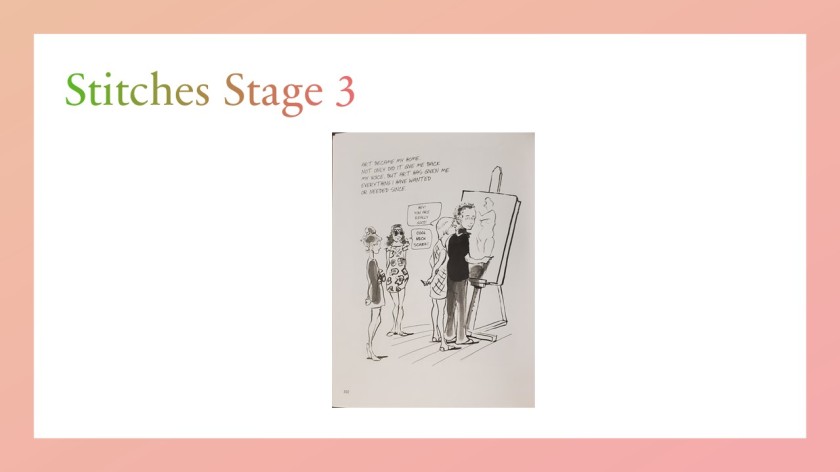Reflection-Halfa Kucha
In my presentation, I focused on analyzing the visual aspect of the comics and explored how visual plays an important role in representing trauma and healing in Fun Home and Sabrina. My thought process for landing on this topic was that firstly, I assumed that most of my classmates would focus on analyzing the plot so I wanted to offer a new perspective in our discussion. Also, as an art history major, I’m always interested in visual analysis so I could treat this assignment as a way to not only practice my visual analysis skill but also learn to connect my observations back to the topic of trauma and healing.
The greatest challenge I had while working on this project was making the presentation more informative and engaging. Therefore, I spent most of the time thinking about how to frame my argument in a way that it could be presented clearly within the various constraints of the format. What I’ve done include: editing my script so that it only had about 3 sentences per slide; selecting images that not only clearly explain my argument but also expand on it; and memorizing the script as I always know that public speaking is my weak spot.
My biggest takeaway from this assignment is the importance of storytelling. I noticed that the presentations that kept me focused all had a really good, slow beginning. The presenters not only responded to the question but also tried to engage the audience to go through their thought processes. The ending is also important, for example, I really like how Ben ended his presentation with a panel of Sabrina which inspired the audience to ponder upon the question he addressed at the end while making the whole presentation sound like a great story. In addition, I think I will try to use the same workflow while making my future presentations: assigning a limited period of time for each slide and correspondingly slimming down the language, as I found it to be a good way to stay focused on the most important points.


